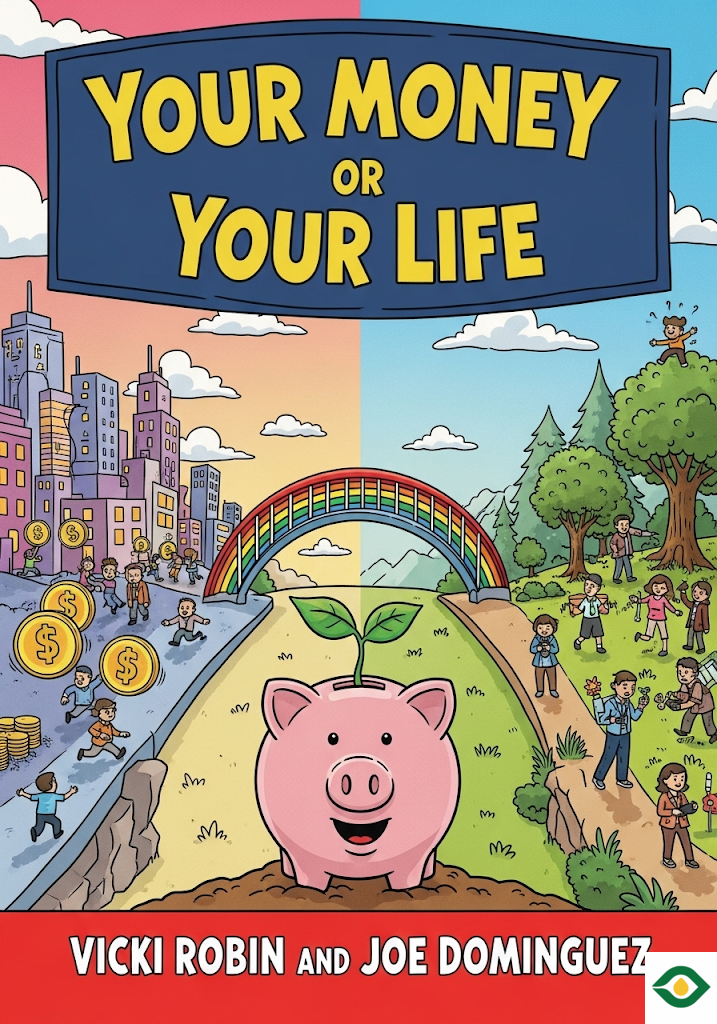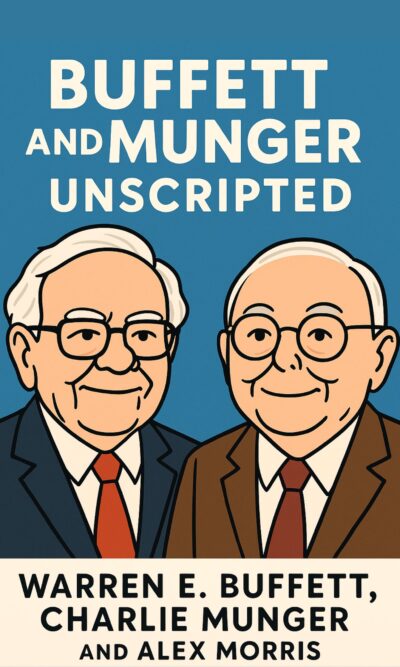Description
Money is something that touches every part of our lives, yet most of us rarely stop to ask what it really means. We spend years working hard, chasing promotions, and trying to earn more, but in the process, we often forget the most valuable thing we have: our time and energy. Your Money or Your Life offers a new way to think about money—not as an end in itself, but as a tool that should serve our lives, not control them.
The book begins with a simple but powerful idea: when you spend money, you’re trading more than just dollars. You’re giving away hours of your life. Every coffee, every gadget, every new pair of shoes represents pieces of your precious time and energy. Once you see money in this way, it becomes clear that overspending isn’t just about waste—it’s about giving away your life for things that may not really matter.
The first step to changing your financial future is to understand your past. Most people don’t actually know how much money has passed through their hands in their lifetime. By calculating everything you’ve ever earned and comparing it to what you currently have, you get a clear picture of how you’ve used money so far. This step can be humbling, but it’s necessary. It shows whether you’ve been living in alignment with your values, or whether much of your income has slipped away without bringing real joy.
Next, the book suggests figuring out your “real hourly wage.” At first, this sounds like the number on your paycheck divided by the hours you work. But in reality, you spend far more time and money on your job than what’s written in your contract. Commuting, preparing for work, buying clothes, eating out because you’re tired, even recovering from stress—all of these are hidden job costs. When you factor them in, your actual hourly pay may be far lower than you thought. Knowing this number changes how you view purchases. A item may not cost you just —it may cost you five or six hours of your life energy. Suddenly, the price feels very different.
After that comes awareness. Instead of creating a strict budget, the book encourages you to track every penny that comes in and goes out. By categorizing your spending in detail—whether it’s food, entertainment, or shopping—you begin to see patterns. Maybe you thought you only ate out occasionally, but the numbers show it’s become a major habit. Or perhaps you notice how much you spend on subscriptions you hardly use. This process isn’t about guilt, but about clarity. Once you see where your money is truly going, you can decide whether each expense is worth the life energy it costs.
Then comes evaluation. The book recommends asking three simple but powerful questions about each spending category: Did this purchase bring me fulfillment? Does it align with my values and purpose? Would I still spend money this way if I didn’t need to work for a living? The answers may surprise you. Some expenses bring deep joy and meaning, while others feel empty in hindsight. With this knowledge, you can begin shaping your spending toward what actually matters.
To keep yourself motivated, the book suggests making a visual chart of your income, expenses, and savings over time. By putting this chart somewhere visible, you see progress month after month. This simple practice builds accountability and turns financial change into a habit. Watching your expenses shrink and your savings grow can be one of the most empowering experiences on the journey to independence.
A major turning point in the program is learning to consciously lower or eliminate unnecessary expenses. Frugality, often misunderstood as deprivation, is reframed here as freedom. It’s not about buying the cheapest things, but about buying fewer, better, and more meaningful things. A high-quality item that lasts years is more valuable than a cheap item that breaks quickly. Cooking at home may not only save money but also bring more satisfaction than constant takeout. And creative solutions—like trading unused space for services—can free you from expenses without sacrificing comfort.
Of course, reducing spending is only half of the equation. Increasing income in line with your values is the other. The book encourages you to see your job not as your identity, but as an exchange of life energy. If you can earn more in a way that aligns with your health and integrity, you accelerate your path to financial independence. Sometimes that means seeking better-paying opportunities, other times it means side work or freelance projects. The key is to make sure your efforts truly move you toward your bigger goals rather than locking you deeper into a lifestyle you don’t want.
Once you have control over your expenses and income, the next step is to invest your savings. The goal isn’t to gamble or chase quick wins, but to create steady, reliable income that eventually covers your living costs. This is where the idea of the “crossover point” comes in—the moment when your investment income surpasses your monthly expenses. Reaching this point means you are financially independent. You no longer need a paycheck to survive. You can choose to work if you want to, but your life is no longer dictated by the need to earn.
Investing can sound intimidating, but the book reassures readers that the basics are simple. Safe, long-term strategies like index funds are usually better than complicated schemes pushed by brokers. What matters is consistency—saving and investing regularly over time. With patience, your savings begin to work for you instead of the other way around.
The final lesson of the book is empowerment. By understanding money as life energy, by spending intentionally, and by building steady investment income, you gain control of your future. Financial Independence is not about becoming rich; it’s about reclaiming your time and freedom. It means being able to live your values, pursue your passions, and focus on the things that truly matter—whether that’s family, creativity, community, or simply peace of mind.
In the end, Your Money or Your Life isn’t just a book about money—it’s a guide to living deliberately. It asks you to stop letting money run your life, and instead, to make money serve the life you want. Every dollar you spend is a piece of your time. When you begin to see this clearly, you can’t help but spend more wisely, live more simply, and move steadily toward true independence.





